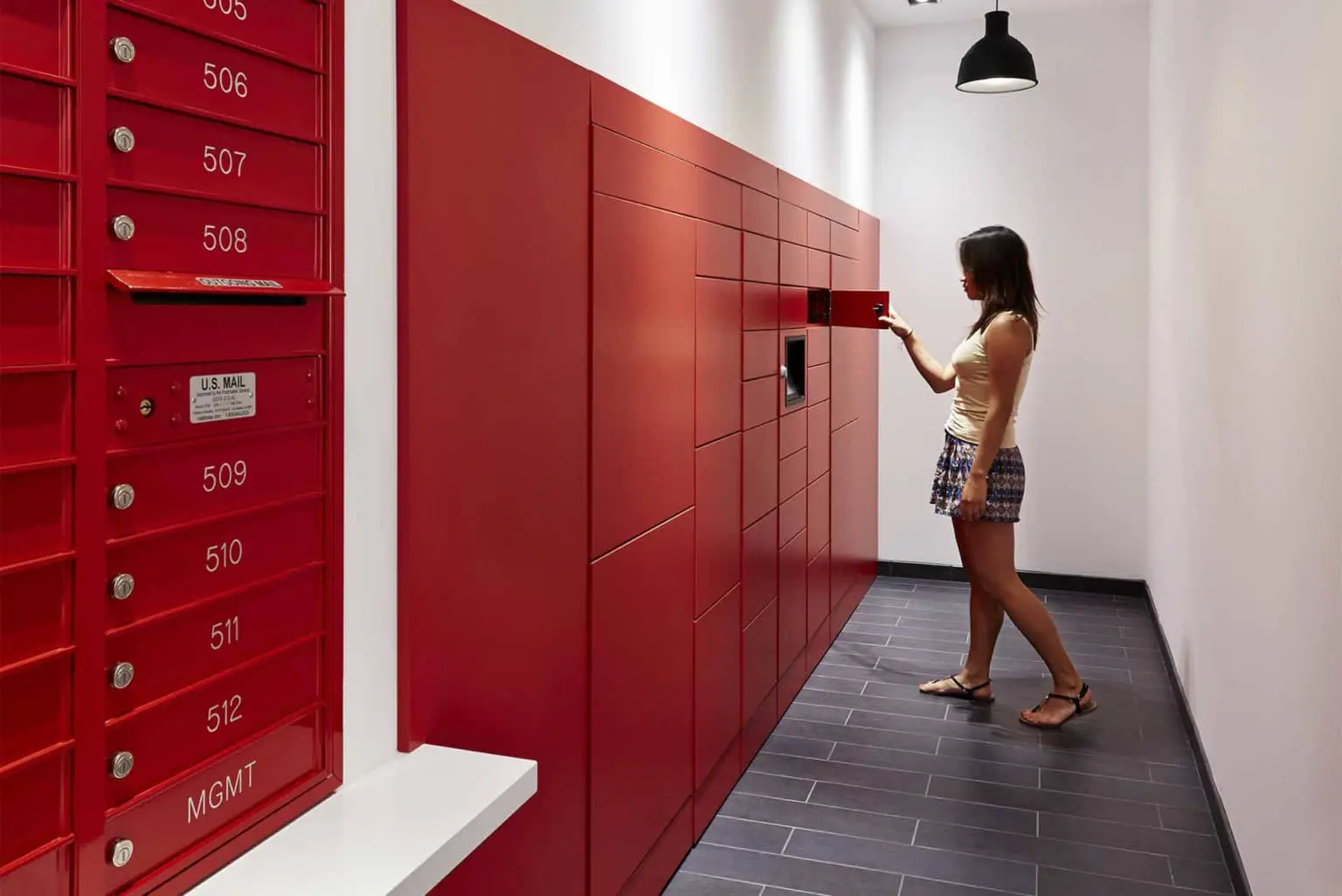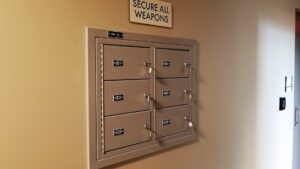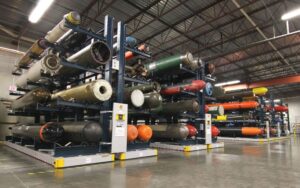
Whether it’s textbooks and supplies, sports gear, or personal items, having the right locker can make all the difference in keeping everything organized and easily accessible. In this ultimate locker guide, we will explore the different types of lockers that every student should consider, as well as the best practices for maximizing their use and overcoming common challenges.
The 3 Essential Lockers for Every Student
Student storage is not complete without the three essential lockers: the academic locker, the sports locker, and the personal items locker. These lockers serve different purposes and are designed to meet the unique storage needs of students. By following best practices and ensuring visibility, students can make the most out of these lockers and keep their belongings organized and secure.
1st type of a locker :
The Academic Locker: A Must-Have for Every Student
The academic locker is a must-have for every student, as it provides a dedicated space to store textbooks, notebooks, and school supplies. Here are some key points to consider when using an academic locker:
- Customization: Personalize your locker with decorations and accessories to make it feel like your own space.
- Organization: Use shelves, dividers, and containers to keep your textbooks and supplies neatly organized.
- Labeling: Label each shelf or container to easily locate specific items.
- Cleanliness: Regularly clean your locker to prevent dust and maintain a clean and organized space.
By following these best practices, students can make the most out of their academic lockers and create an efficient and productive study environment.
2nd type of a locker :
The Sports Locker: Keeping Athletic Gear Organized
The sports locker is essential for students who participate in athletic activities. It provides a dedicated space to store their sports gear and equipment. Here are some best practices for maintaining a well-organized sports locker:
- Proper Ventilation: Ensure that your locker has proper ventilation to prevent the buildup of odors and moisture.
- Regular Cleaning: Clean and disinfect your sports gear regularly to prevent the growth of bacteria and maintain hygiene.
- Equipment Organization: Use hooks, shelves, and compartments to keep your gear organized and easily accessible.
- Gear Maintenance: Regularly inspect and maintain your sports gear to ensure it remains in good condition and performs optimally.
By following these best practices, students can keep their athletic gear organized, clean, and in good condition, allowing them to focus on their sports activities with ease.
3rd type of a locker :
The Personal Items Locker: Securing Valuables and Electronics
The personal items locker is essential for students to keep their valuables and electronics secure. Here are some best practices for using a personal items locker:
- Lock Security: Invest in a high-quality lock to ensure the security of your locker. Combination locks or smart locks with unique codes are recommended.
- Limited Access: Avoid sharing your locker combination or access code with others to maintain the privacy and security of your belongings.
- Valuable Storage: Use small lockable containers within your locker to store valuable items such as wallets, phones, and jewelry.
- Electronic Device Safety: Keep your electronic devices, such as laptops and tablets, in padded sleeves or cases to protect them from damage.
By following these best practices, students can ensure the security of their valuables and electronics and have peace of mind knowing that their belongings are safe.
Exploring the Academic Locker
The academic locker is a versatile storage solution for students, allowing them to keep their textbooks, supplies, and personal items organized. By following best practices and considering customization options, students can make the most out of their academic lockers and create a functional and personalized study space.
When selecting an academic locker, it is important to consider the right size and design that will meet your storage needs. Here are some factors to consider:
- Size: Determine the amount of space you will need based on the number of textbooks, supplies, and personal items you plan to store.
- Design: Consider the layout and features of the locker, such as shelves, compartments, or hooks, to ensure it meets your organizational needs.
- Accessibility: Choose a locker with easy accessibility to your most frequently used items for convenience and efficiency.
Organizational Tips for Textbooks and Supplies
Proper organization is key to maximizing the use of your academic locker. Here are some organizational tips for textbooks and supplies:
- Categorize: Sort your textbooks and supplies into categories, such as by subject or semester, to easily locate specific items.
- Utilize Shelves and Compartments: Use shelves and compartments within your locker to separate different subjects or types of supplies.
- Labeling: Label each shelf or compartment to clearly identify its contents and make it easier to find what you need.
- Regular Inventory: Regularly take inventory of your textbooks and supplies to ensure you have what you need and remove any unnecessary items.
Customizing your academic locker is a great way to add a personal touch and create a welcoming study environment. Here are some ideas for customization:
- Decorative Decals: Apply decorative decals or stickers to the exterior of your locker to add personality and style.
- Inspirational Quotes: Display inspirational quotes or images inside your locker to inspire and motivate you during study sessions.
- Magnetic Organizers: Use magnetic organizers to hold small supplies or important notes on the interior walls of your locker.
- Bulletin Board: Attach a bulletin board to the inside of your locker door to pin important reminders or study schedules.
By customizing your academic locker, you can create a space that reflects your personality and enhances your studying experience.
The Importance of a Sports Locker
A sports locker is essential for students who participate in athletic activities, as it provides a dedicated space to store their sports gear and equipment. By following best practices for maintenance and organization, students can keep their athletic gear in good condition and easily accessible for practices and games.
Sports equipment comes in various shapes and sizes, and accommodating them in a sports locker requires efficient organization and space utilization. Here are some tips for maximizing space and organizing different types of sports equipment:
- Utilize Hooks and Hangers: Install hooks and hangers in your sports locker to hang items such as jerseys, jackets, and bags.
- Use Stackable Bins or Cubbies: Stackable bins or cubbies can help organize smaller sports gear such as balls, gloves, and helmets.
- Shoe Storage: Consider adding a shoe rack or shelf to keep your athletic shoes separate from other items in your locker.
- Equipment Maintenance: Regularly clean and inspect your sports gear to ensure it remains in good condition and ready for use.
Maintenance and Cleaning Tips
Proper maintenance and cleaning of sports gear are essential for ensuring its longevity and performance. Here are some maintenance and cleaning tips for sports lockers:
- Regular Cleaning: Clean your sports locker regularly to prevent the buildup of dirt, odors, and bacteria.
- Gear Inspection: Inspect your sports gear regularly for any signs of wear and tear, such as loose stitching or damaged padding.
- Equipment Drying: Allow your sports gear to dry thoroughly before storing it in your locker to prevent the growth of mold and mildew.
- Deodorizing: Use deodorizing sprays or sachets to keep your sports locker smelling fresh and clean.
By following these maintenance and cleaning tips, students can ensure that their sports gear remains in good condition and ready for use.
Sharing Sports Lockers: Pros and Cons
Sharing a sports locker with a teammate can have its advantages and disadvantages. Here are some pros and cons to consider:
Pros:
- Cost Saving: Sharing a locker allows teammates to split the cost, reducing individual expenses.
- Convenience: Sharing a locker can make it easier to coordinate and access shared sports gear.
- Team Bonding: Sharing a locker fosters camaraderie and team bonding among teammates.
Cons:
- Space Limitations: Sharing a locker means having limited space for personal belongings and equipment.
- Organization Challenges: Different organization preferences and habits among teammates can lead to disorganization and confusion.
- Security Concerns: Sharing a locker increases the risk of misplaced or stolen belongings.
By weighing the pros and cons, students can make an informed decision about sharing a sports locker and take necessary measures to address any challenges that may arise.
Maximizing the Use of a Personal Items Locker
A personal items locker is essential for students to keep their valuables and electronics secure. By following best practices for storage, organization, and security, students can make the most out of their personal items locker and have peace of mind knowing that their belongings are safe.
Best Practices for Storing Electronics
Storing electronics in a personal items locker requires extra care and consideration to ensure their safety and functionality. Here are some best practices for storing electronics:
- Secure Storage: Use lockable compartments or containers within your locker to store your electronics securely.
- Protective Cases: Keep your electronics, such as laptops and tablets, in protective cases or sleeves to prevent damage.
- Cable Management: Use cable organizers or clips to keep your charging cables tidy and prevent tangling.
- Backup Data: Regularly backup your electronic data to an external hard drive or cloud storage to protect against loss or damage.
By following these best practices, students can ensure the security and longevity of their electronic devices and have peace of mind knowing their data is protected.
Ideas for Personalizing Your Locker
Personalizing your personal items locker adds a touch of personality and makes it feel like your own space. Here are some ideas for personalizing your locker:
- Decorative Magnets: Use decorative magnets to display photos, artwork, or inspirational quotes on the exterior of your locker.
- Wallpaper or Wrapping Paper: Line the interior walls of your locker with wallpaper or wrapping paper to add color and style.
- Mirror: Attach a small mirror to the interior door of your locker for quick checks or touch-ups.
- Magnetic Organizer: Use a magnetic organizer to store small items or notes on the interior walls of your locker.
By personalizing your personal items locker, you can create a space that reflects your style and adds a personal touch to your daily routine.
Security Measures to Protect Your Belongings
Ensuring the security of your personal items locker is crucial for protecting your valuables. Here are some security measures to consider:
- Lock Selection: Invest in a high-quality lock with a unique combination or key to secure your locker.
- Limited Access: Avoid sharing your locker combination or key with others to maintain the privacy and security of your belongings.
- Regular Checkups: Regularly check the integrity of your locker and report any maintenance issues or concerns to the appropriate authority.
- Reporting Suspicious Activity: Report any suspicious activity or concerns to school authorities or locker room supervisors.
By implementing these security measures, students can protect their personal belongings and have peace of mind knowing that their locker is secure.
Innovative Locker Features Students Love
Innovative locker features enhance the functionality and security of student storage. By incorporating smart locks, built-in charging stations, and ventilation systems, students can enjoy a seamless and convenient storage experience.
- Built-in Charging Stations in lockers provide a convenient solution for students to charge their electronic devices while keeping them secure. These charging stations eliminate the need for external charging adapters and cables, offering a hassle-free charging experience. Students can simply connect their devices to the charging station and have peace of mind knowing that their devices are safe and secure while they focus on their studies or activities. Built-in charging stations also help students avoid the inconvenience of searching for power outlets or carrying additional charging accessories. By incorporating this innovative feature into student lockers, educational institutions can provide a valuable service to students and enhance their overall experience.
- Smart Locks for Enhanced Security and convenience for student lockers. These locks utilize advanced technology, such as keyless entry, biometric recognition, or smartphone authentication, to provide secure access to lockers. With smart locks, students no longer need to remember combination codes or carry keys. They can simply use their authorized credentials, such as fingerprints or smartphone apps, to unlock their lockers. Smart locks also offer additional security features, such as tamper alerts or remote monitoring, which can help prevent unauthorized access and protect students’ belongings. By incorporating smart locks into student lockers, educational institutions can provide a modern and secure storage solution for students.
- Ventilation Systems for Sports Lockers are essential for preventing odor buildup and maintaining the freshness of sports gear. These systems help circulate air and promote airflow, reducing moisture and preventing the growth of bacteria or mold. Proper ventilation in sports lockers also helps prolong the lifespan of sports gear by preventing the accumulation of moisture, which can cause damage or deterioration. With ventilation systems, students can ensure that their sports gear remains clean, fresh, and ready for use. Educational institutions can incorporate ventilation systems into sports lockers to provide a hygienic and odor-free environment for students and promote the longevity of their sports gear.
Overcoming Common Locker Challenges
While student lockers offer numerous benefits, there are also common challenges that students may face. By following best practices and adopting strategies to address these challenges, students can overcome them and make the most out of their locker experience.
Dealing with Limited Space
Limited space in student lockers can be challenging when it comes to organizing belongings. Here are some tips for dealing with limited space:
- Efficient Utilization: Use shelves, dividers, or containers to maximize the available space and create additional storage areas.
- Prioritization: Prioritize the items you use most frequently and keep them easily accessible, while storing less frequently used items in harder-to-reach areas.
- Regular Inventory: Regularly go through your locker and remove any unnecessary items to free up space and maintain organization.
- Vertical Storage: Utilize vertical space by hanging items or using stackable bins to make the most out of limited horizontal space.
By implementing these strategies, students can effectively manage their belongings within limited locker space and maintain an organized storage system.
Addressing Security Concerns
Addressing security concerns is crucial for ensuring the safety of students’ belongings. Here are some security measures to address common locker security concerns:
- Lock Selection: Invest in a high-quality lock that provides reliable security and ease of use.
- Limited Access: Avoid sharing locker combinations or keys with others to maintain the privacy and security of your belongings.
- Reporting Incidents: Report any suspicious activity or security incidents to school authorities or locker room supervisors.
- Regular Checks: Regularly inspect your locker for any signs of tampering or damage and report any concerns to the appropriate authority.
By implementing these security measures and staying vigilant, students can minimize the risk of theft or unauthorized access to their lockers and ensure the safety of their belongings.
Tips for Sharing Lockers
Sharing lockers can present unique challenges, but with the right strategies, it can be a successful arrangement. Here are some tips for sharing lockers:
- Communication: Establish open lines of communication with your locker partner to discuss storage needs, boundaries, and any concerns that may arise.
- Organization: Set clear guidelines for organizing and dividing the space within the locker to prevent confusion or conflicts.
- Respect Boundaries: Respect your locker partner’s belongings and personal space by avoiding touching or moving their items without permission.
- Regular Check-Ins: Regularly check in with your locker partner to address any issues or concerns and ensure that the sharing arrangement is working well.
By following these tips and maintaining open communication, students can successfully share lockers without risking the security of their belongings.








